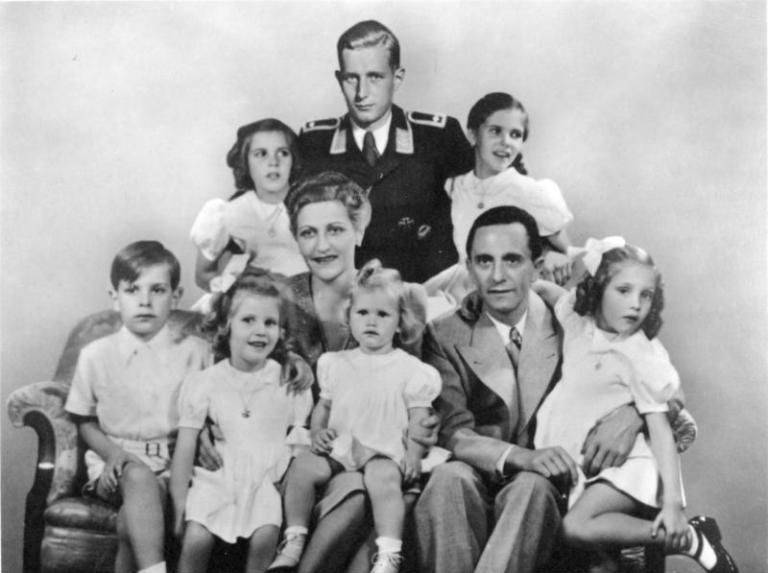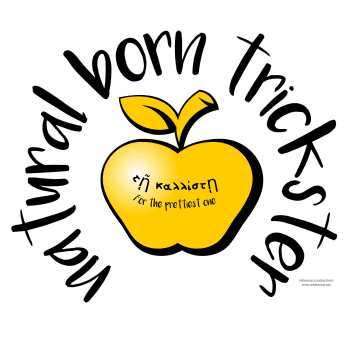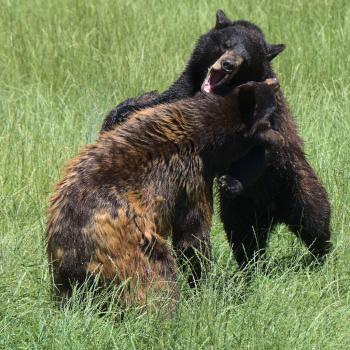The New York Times recently ran a story profiling a white nationalist and Nazi apologist. The story is very matter-of-fact: the white nationalist dingbat and his fiance talk with the reporter over dinner at an Applebee’s in the Dayton, Ohio suburbs. He’s a fan of Twin Peaks and Seinfeld. He has good Midwestern manners. He grew up as an Army brat, and played drums in heavy metal bands.
And he helped found the “Traditionalist Worker Party”, a group whose mission is to “fight for the interests of White Americans” and which is currently selling on its website Nazi swastika armbands. He speaks favorably of fascism, likening it to building giant mecha to fight kaiju monsters. (Really.) He would like to turn the US into a white ethno-state (we’ve previously covered how whiteness is not an ethnicity) with power was reserved for landowners, a la the early United States. He thinks the claim that six million Jews died in the Holocaust is “overblown”, and Hitler “was a lot more kind of chill on [the] subjects” of exterminating groups like Slavs and homosexuals than Himmler.
Let me repeat that one: according to our subject, Hitler was “kind of chill.”
The story has generated a lot of social media heat. The Times has been accused of normalizing Nazis and failing to challenge the subject to defend his ideology.
A lot of the criticism seems to be based on an assumption that readers lack the context to understand that white nationalism is stupid and Nazi apologists are bad. These critics want the author to review those points some more; they are disappointed that he didn’t challenge the interviewee to defend his outrageous assertions.
I’m not sure that’s necessary. I would guess that the average reader of the New York Times understands that Nazis are bad and that the interviewee is infected with some horrible ideas. Any reader who can’t see that, needs a deeper correction than could have come from this reporter making more pointed inquiries during this interview.
That’s not to say I find the piece entirely satisfactory. The author doesn’t either; he admits that the question of how this man came to be so twisted remains unanswered, a hole in the center of the story.
And that is the central question of our political moment.

Ethnography Is Valuable
But if the author can’t answer it, the data he collects is at least a step in the right direction.
Maybe it’s because I’ve been reading some scholarly ethnography lately (over the past few months I slowly chewed my way through Declan Quigley’s The Character of Kingship), but it strikes me that sometimes a journalist must act as a scientist setting out to collect data in an unbiased manner. When I read an anthropologist’s report of the human sacrifice rites of some tribal society, I don’t need the author continually telling me that murder is wrong, or challenging his or her subjects to defend the practice. Just so, there is a place for neutral ethnographic reporting about the subculture of white nationalists who dwell among us.
It’s important because we’ve had a tendency to portray Nazis and racists and white nationalists as cartoonish villains, stereotypical others. Then we could rest assured that It Can’t Happen Here.
But besides the general political climate, in my own experience it’s been a year since a white nationalist couple was outed in my social/artistic circle here in Baltimore, among people I called friends. It did happen here, and it was a shock.
Fascists Among Us
I’ll avoid last names and links here, but here’s the story.
I’d known Heather for years; she’d been to my house and we’d had a few deep conversations about life and art and religion. She introduced me to her boyfriend Erik, saying that he had an interest in Paganism, had helped a friend publish a book that touched on it, and we should talk; we never really did, though we exchanged pleasantries and clinked glasses at a few shows of Heather’s then-band, The Funky Bass And Beat Group Known As F. (The non-racist members have now reformed with a new singer as F City, and are amazing.) They directed and starred in a video for another great local band, Voodoo Pharmacology, and were thoroughly a part of our local indie art scene — a scene as socially progressive as any. (Not to say it’s perfect, just that it’s a group where you’d find a strong consensus that we can and need to do a better job about social justice.)
When our friend Alice’s mother died, Heather was among the handful of friends who made the hours-long journey to Maryland’s Eastern Shore to support her at the funeral.
If you had asked me, “Is this a good person?”, I would have unhesitatingly said “yes!”
And then another friend spotted Erik in a video of the infamous National Policy Institute conference where white nationalist asshat Richard Spencer gave a Nazi salute while crying “Hail Trump! Hail our people! Hail Victory!” It turned out that the supposed Pagan-ish book was a pile of sophomoric Nietzscheist racist crap, and Erik was trying to sell it at the conference.
There was no denial, no apology; in the social media storm that followed Erik tried to milk the publicity on alt-right websites, while Heather stood by her man and openly defended fascism as friends tried and failed to pull her back to sanity.
People, Not Cartoons
They weren’t cartoon villains or drooling obvious racists or isolated ignorant people. Heather is an Army veteran, Erik has a degree from the exclusive Maryland Institute College of Art. This happened not in some 99% white rural town in a red state, but in racially mixed, Democrat-dominated Baltimore. Hell, one of Heather’s bandmates was black, and at least one woman who considered her a friend is Jewish; I can only imagine the shock and betrayal they have experienced around this.
What went wrong to bring these people to this state?
How did people capable of artistic creation end up twisting that gift to support racism and fascism instead of political-artistic liberation?
How do such ugly memes — in the Dawkins sense, not the Internet sense — invade and take over healthy brains? And how do we reverse the process?
If we have to guard every discussion about white nationalists’ personal history with repeated warnings that the ideology is irrational and stupid, if every interview with those who have fallen under the spell of hate must be an argument with them, it’s going to be even harder to answer these vital questions.
Let us remember that the goal is to solve the problem of bigotry, hate, and violence, not merely to take every opportunity to denounce those infected by it. It is always a temptation to separate those who have done terrible things or said awful words, to think there is some vast gulf or great flaw between them and us, that our friends and loved ones — or we ourselves — could never miss the mark like that.
And that’s a dangerous mistake.
So if reportage like this seems to normalize race hatred, perhaps that should be a reminder of the tragic truth that “normal” people can fall into it.













